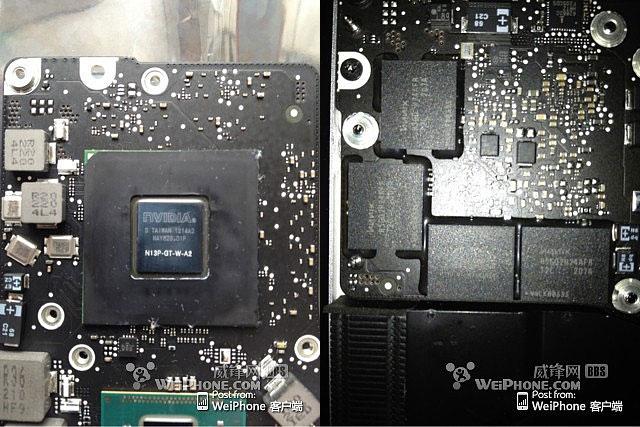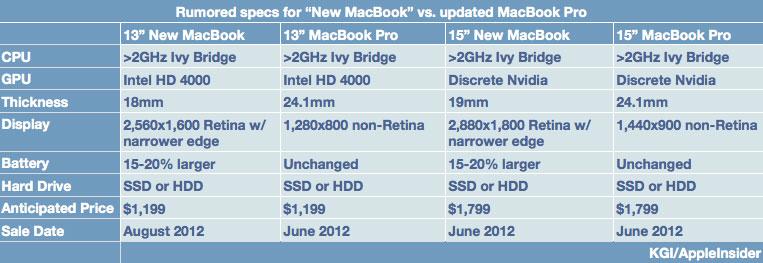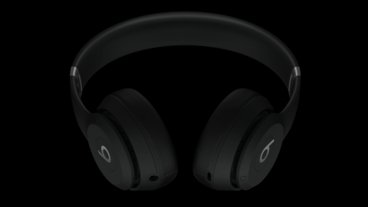Photos claim to show Nvidia GT 650M GPU in Apple's next MacBook Pro
The pair of pictures (1, 2) were first publicized by M.I.C. Gadget, along with purported details about the new MacBook Pro. According to the person who originally posted the pictures, the new 15-inch MacBook Pro will be offered with Intel's latest Ivy Bridge processors in speeds of 2.3, 2.5 or 2.7 gigahertz.
The pictures with the new graphics processor also show Nvidia's GeForce GT 650M with 1 gigabyte of GDDR5 memory.
Also noteworthy is the fact that the purported new MacBook Pro logic board has the same shape, position and screw hole placement as the current generation design. That suggests this new MacBook Pro, if legitimate, will not feature a thinner appearance or redesigned exterior.
AppleInsider was first report last week that Apple is expected to unveil a "new MacBook" series this week that will be positioned between the MacBook Air and MacBook Pro. The "new MacBooks" are expected to have a thinner design lacking an optical disc drive along with high-resolution Retina displays.
This week, Apple is rumored to unveil a new 15-inch MacBook alongside new 13- and 15-inch MacBook Pros, and new 11- and 13-inch MacBook Airs. A thinner 13-inch "new MacBook" is expected to launch in August of this year by analyst Ming-Chi Kuo of KGI.
The new, thinner MacBooks will reportedly feature a slimmer form factor of 18 millimeters for the 13-inch model and 19 millimeters for the 15-inch, with display resolutions of 2,560-by-1,600 pixels for the smaller model, and 2,880-by-1,800 pixels for the larger. Edges outside the display are supposed to be 50 percent narrower than the MacBook Pro, and the new MacBooks are also rumored to feature a larger battery capacity that will be about 15 to 20 percent greater than the MacBook Pro.
 Sam Oliver
Sam Oliver












 Andrew Orr
Andrew Orr
 Sponsored Content
Sponsored Content
 Malcolm Owen
Malcolm Owen

 William Gallagher
William Gallagher

 Mike Wuerthele
Mike Wuerthele
 Christine McKee
Christine McKee







